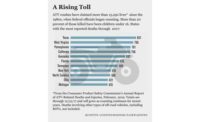 Since first being introduced in the U.S. for agricultural use in the early 1980s, ATVs have grown increasingly popular recreationally and more recently, for work. There are currently more than 10 million ATVS in use in this country.
Since first being introduced in the U.S. for agricultural use in the early 1980s, ATVs have grown increasingly popular recreationally and more recently, for work. There are currently more than 10 million ATVS in use in this country.
In order to educate workers about ATV-related hazards and how to minimize them, the National Institute for Occupational Safety and Health (NIOSH) has released a guide, All-terrain Vehicle (ATV) Safety at Work.
“ATVs have unique features that enable them to operate in harsh work environments where larger, less mobile vehicles cannot safely be used,” according to NIOSH. “Their oversized, deep tread, and low-pressure tires (4-5 psi) and light weight (600-1000 pounds) - compared to other motorized vehicles - enhance their maneuverability but also present risks such as a rollover which may occur due to a high center of gravity and a relatively narrow wheelbase.”
ATVS are often used in border patrol and security; construction operations; emergency medical response; land management and surveying; mineral and oil exploration, pipeline maintenance; ranching and farming and forestry activities, including wildland fire control.
Rollerovers are the most common cause of crashes, and animal production workers are at the highest risk for injury.
The NIOSH guide includes recommendations for both employers (i.e., identify and mark hazards such as excavations and guy wires) and employees (i.e., wear PPE). Click here to access the guide.



